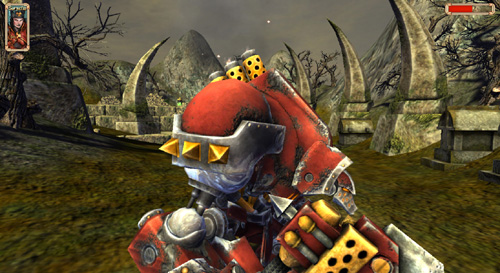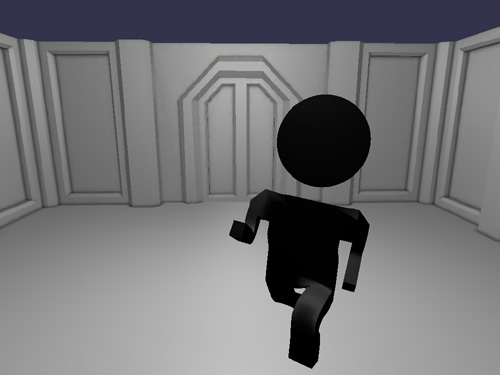Triangle Game Conference, Taiwan, Mangled Metal, and Gamebryo LightSpeed
by Mike DalyMay 4, 2009
Last week, Mike Lee and I gave a presentation at the Triangle Game Conference entitled "Jamming with Games". The presentation was divided into 4 sections that explained Game Jams (such as the Triangle Game Jam).
We covered:
- Definition & History
- Benefits
- Best Practices
- How to organize an event
Overall, I think it went really well. We had decent attendance considering that we were in the last time slot of the conference and it’s a subject that most game developers probably don’t care much about. I’m supposed to post the slides so that anyone who attended the talk can reference them. Hopefully those people waited a few days before visiting my site (or just visited Mike’s instead). Here they are:
There is a lot of additional context in the speaker notes if you want more. It got me fired up to start work on organizing the 2009 Triangle Game Jam.
China & Taiwan
I just recently got back from China and Taiwan. It was unfortunate that I missed the first seminar, but it wasn’t the end of the world (although it felt like it before I left). The main reason I went was that my company (Emergent) wanted an engineer to attend 3 seminars we were holding in Beijing, Shanghai, and Taipei to give live demonstrations of our new engine: Gamebryo LightSpeed. For each demo I would show our sample game Mangled Metal, then show how you can rapidly change the game using the tools and engine features that come with Gamebryo LightSpeed.
Luckily, right in the middle, I had a few days free in Shanghai. I spent that time with Dave, Joka, and young Trevor. That was great; my favorite part of the trip.
The last leg of the trip was in Taipei, Taiwan. At first I wasn’t very impressed with Taiwan; every building everywhere you looked was run down and dirty, but the places we stayed were extremely overpriced and I was surrounded by all this elitist high fashion shopping that I’m basically allergic to. However, I got a chance to visit two customer game studios while we were there and that was really cool. Both places were really nice, seemed to have cool people working there, had interesting games, and tons and tons of toys. The seminar was pretty nice too, and since I left directly back to the airport I left with a better impression than I started with.
Mangled Metal
I keep making allusions to Mangled Metal. This is the sample game that demonstrates the use of Gamebryo LightSpeed. Over the past seven months or so, helping create this sample has been my primary job responsibility. Getting to work on a sample is a double edged blade; there are a lot of fun and interesting challenges and it’s a great chance to be creative. However, on the other hand, our company doesn’t usually work on projects like this so our development process was pretty immature in a lot of ways. This led to a lot of unfortunate headaches, not the least of which was months of crunch to keep the project on schedule. Hopefully we will do better next time, but I’m a little hesitant to want to work on the next sample after this experience.
Anyway, Mangled Metal is a third person action game set in the War Machine universe. The player controls a War Jack – a steam/magic powered metal robot approximately 2~3 meters tall. The warjack walks through a valley/graveyard area pounding on bad guys until he gets to the end where, after pounding all the bad guys, the game abruptly ends.

You are probably getting bored of Mangled Metal screenshots by now
The player can perform light attacks in a combo while moving, make a heavy attack, or a charge attack if running. The player can also cast an area of effect spell. Some of the technology highlights include 3D directional sound, GFx (flash) UI, dynamically destructible environment props, and physics simulation with ragdoll. The combat mechanics, enemy AI, and triggers/events are all driven by scripted behaviors written in Lua.
It is a really useful sample for showing off the new tools in Gamebryo LightSpeed, it’s development provided critical guidance for the work that went into the LightSpeed product itself, it gives our customers a good starting point and reference code for starting their own projects, it was larger than any other demo Emergent has done in the past so it stressed our pipeline in good ways, and an early version of the sample formed the basis of our base game sample application. There is a lot of good stuff about it so I guess I should be proud of having done so much work on it.
When the project was first starting out, before the artists had ramped up and gotten something they could show, I created a bunch of placeholder art just to get things running. We actually ended up shipping a bunch of my placeholder art with Gamebryo LightSpeed in our samples. I’m a little entertained by that; I never intended for it to be used as part of the product, but that is a sentiment that we express about a large number of components of the engine.

This is some of my proxy art we ended up shipping
Gamebryo LightSpeed
Gamebryo LightSpeed finally went gold a few days ago. We are now internally working on preparing the final build for distribution to our (rather large number of) evaluators and customers. This marks a huge milestone for our company and yet another accomplishment that I’m glad to have behind me. It seems like there have been a lot of things that I couldn’t wait to be over with recently.

Hello, sexy!
Technically, we (Emergent employees) aren’t supposed to be discussing this externally because we haven’t announced it to our customers yet. Marketing also wants to make sure that everyone sends the right message about the release. We are also supposed to use a different version of the logo. I guess I just feel like being a rebel today.